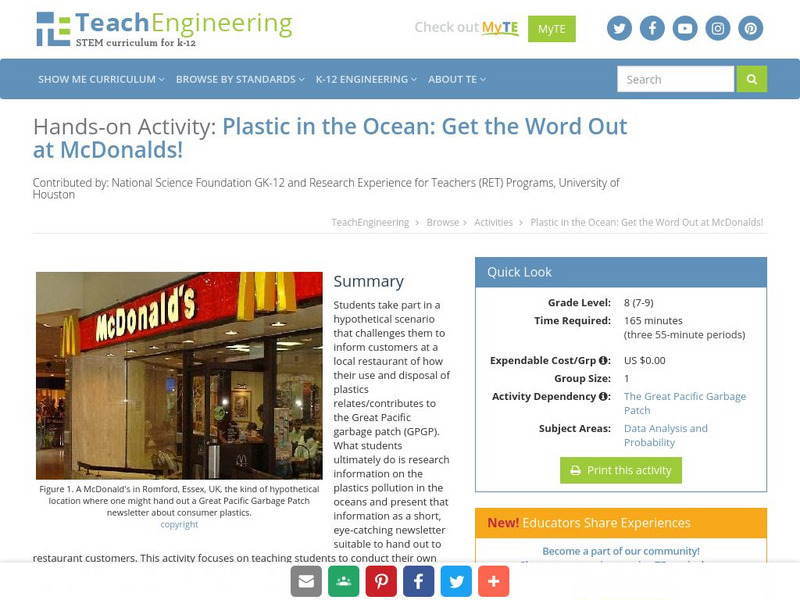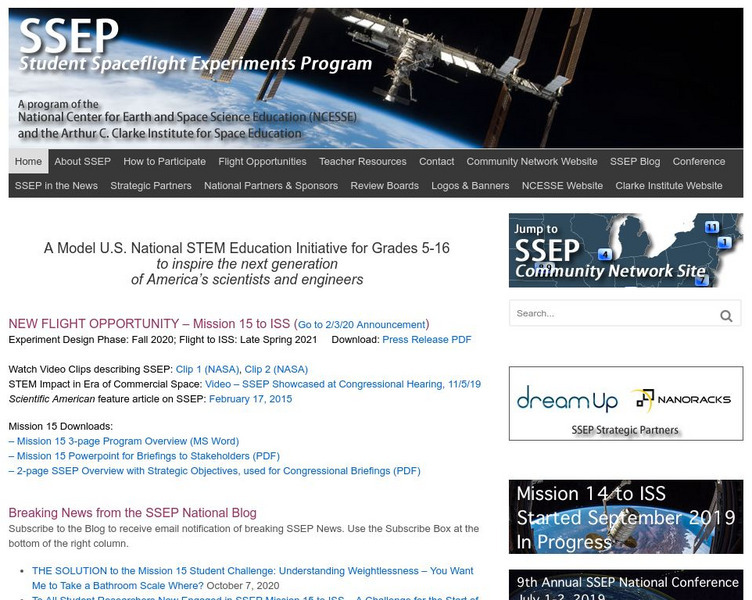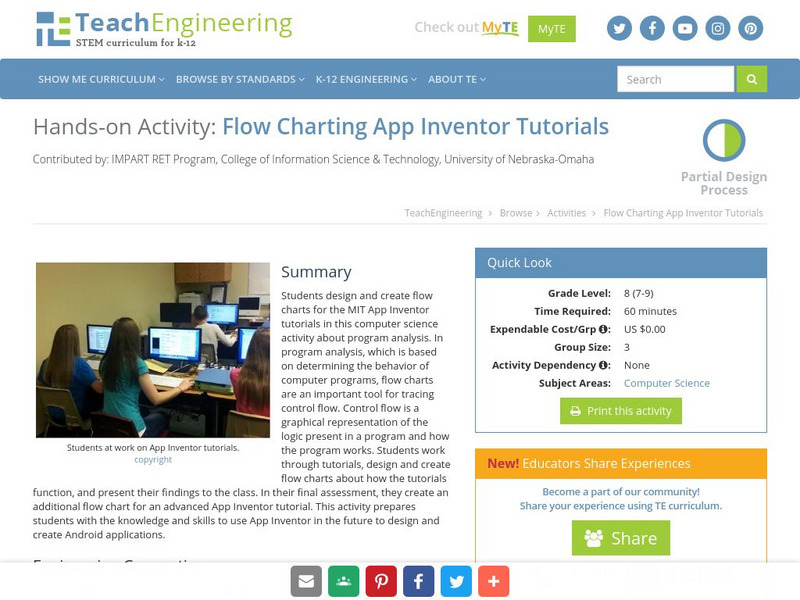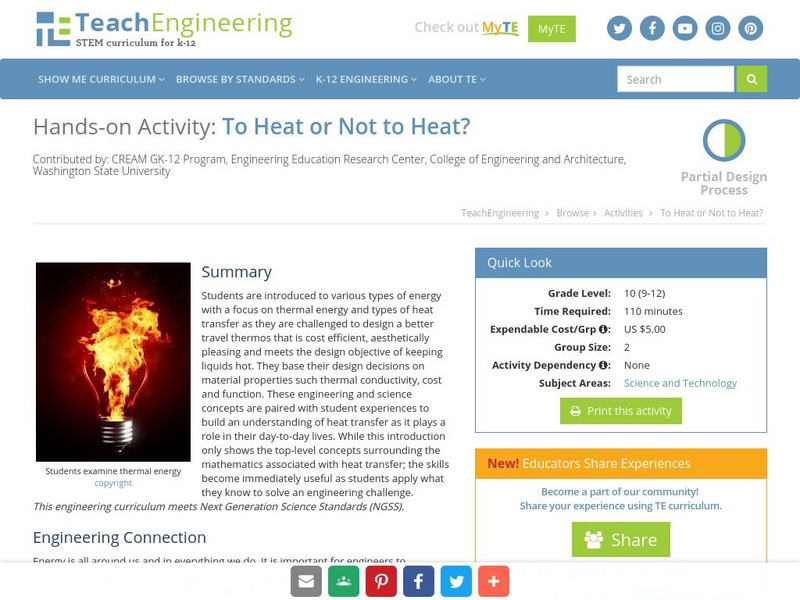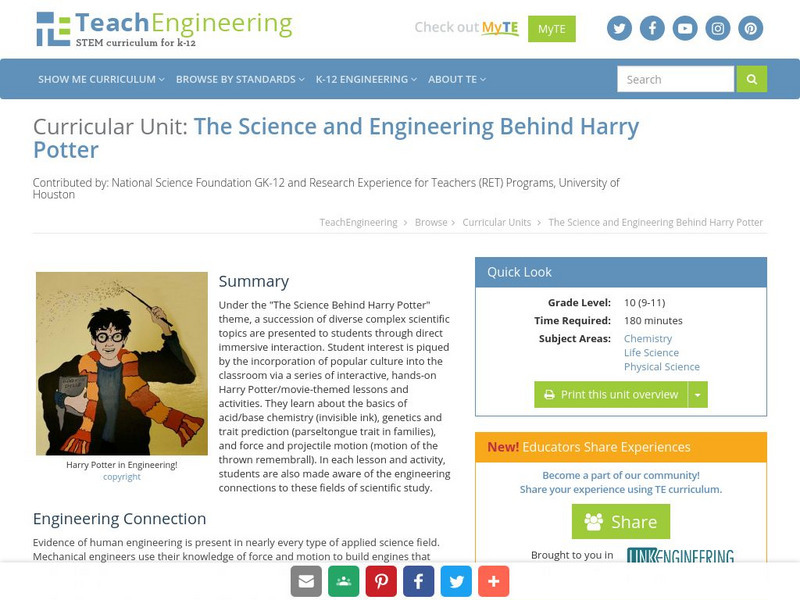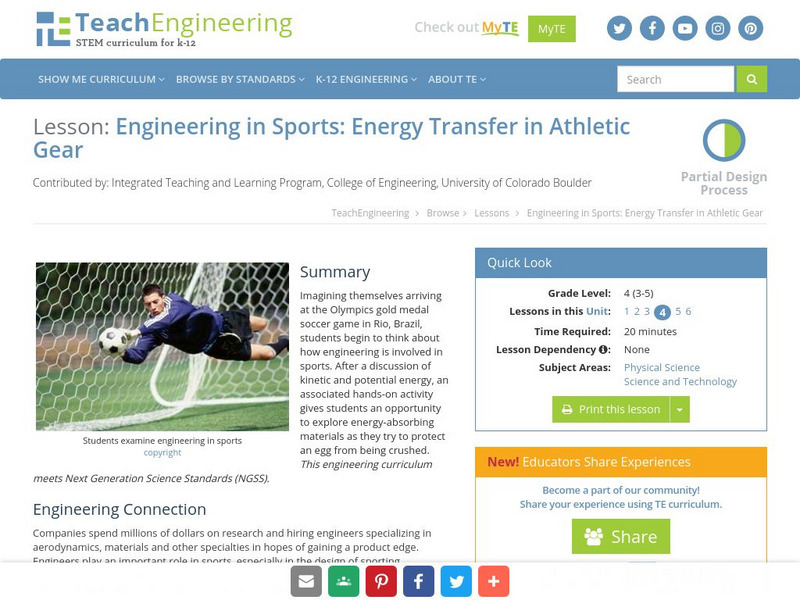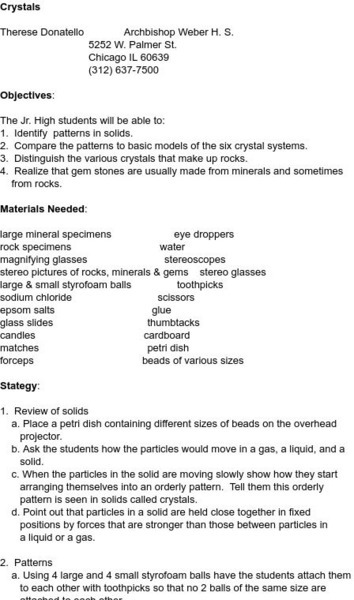Hi, what do you want to do?
University of Arizona
The Biology Project: History of the Biology Project
Highly interactive learning materials in the study of biology, used to support the lecture, laboratory, and discussion sessions of general education courses.
TeachEngineering
Teach Engineering: Get the Word Out at Mc Donalds!
Students take part in a hypothetical scenario that challenges them to inform customers at a local restaurant of how their use and disposal of plastics relates/contributes to the Great Pacific garbage patch (GPGP). What students...
Other
Ncesse: Student Spaceflight Experiments Program
A competition for students in Grades 5 and up, in which they design an experiment that would fly in space under conditions of microgravity. Winners in local competitions are chosen to submit their designs for inclusion in a...
TeachEngineering
Teach Engineering: Riding the Gravity Wave
Students write a biographical sketch of an artist or athlete who lives on the edge, riding the gravity wave, to better understand how these artists and athletes work with gravity and manage risk. Note: The literacy activities for the...
TeachEngineering
Teach Engineering: Flow Charting App Inventor Tutorials
Students design and create flow charts for the MIT App Inventor tutorials in this computer science activity about program analysis. In program analysis, which is based on determining the behavior of computer programs, flow charts are an...
TeachEngineering
Teach Engineering: To Heat or Not to Heat?
Students are introduced to various types of energy with a focus on thermal energy and types of heat transfer as they are challenged to design a better travel thermos that is cost efficient, aesthetically pleasing and meets the design...
TeachEngineering
Teach Engineering: Mission to Mars
The Mission to Mars curricular unit introduces students to Mars-the Red Planet. Students discover why scientists are so interested in studying this mysterious planet. Many interesting facts about Mars are revealed, and the history of...
TeachEngineering
Teach Engineering: To Absorb or Reflect, That Is the Question
This is the last of five sound lessons, and it introduces acoustics as the science of studying and controlling sound. Students learn how different materials reflect and absorb sound.
TeachEngineering
Teach Engineering: Energy Transfer in Musical Instruments
This lesson plan covers concepts of energy and energy transfer utilizing energy transfer in musical instruments as an example. More specifically, the lesson plan explains the two different ways in which energy can be transferred between...
TeachEngineering
Teach Engineering: Complex Networks and Graphs
Students learn about complex networks and how to represent them using graphs. They also learn that graph theory is a useful mathematical tool for studying complex networks in diverse applications of science and engineering, such as...
TeachEngineering
Teach Engineering: Engineering Out of Harry Situations
Under the "The Science Behind Harry Potter" theme, a succession of diverse complex scientific topics are presented to students through direct immersive interaction. Student interest is piqued by the incorporation of popular culture into...
Curated OER
Wikipedia: National Historic Landmarks in Arizona: Desert Laboratory
Founded in 1903 to study plant adaptation to an arid desert environment with long term experiments, this laboratory contributed significantly to the formation of Ecology as a science. Part of the University of Arizona.
TeachEngineering
Teach Engineering: Engineering in Sports
Imagining themselves arriving at the Olympic gold medal soccer game in Beijing, students begin to think about how engineering is involved in sports. After a discussion of kinetic and potential energy, an associated hands-on activity...
Science and Mathematics Initiative for Learning Enhancement (SMILE)
Smile: Crystals
From the Science and Mathematics Initiative for Learning Enhancement (SMILE) program. A lesson plan in which learners study and model crystal patterns, properties, and structures. Utilizes real samples of crystals and styrofoam balls.
Alabama Learning Exchange
Alex: How Sweet It Is
As part of the study of Matter, the students will determine the density of standard percent sugar solutions through hands on experimentation. In laboratory groups, students will graph a standardized curve of the experimental data. The...
Texas Instruments
Texas Instruments: Measuring Air Pressure
This activity is intended for an Introductory Meteorology class; an earth science elective intended for Juniors and Seniors. (It was orginally modifed from an Introductory Meteorology Laboratory Assigment taught to undergraduates at...
Climate Literacy
Clean: Carbon Cycle
This activity from NOAA Earth System Research Laboratory introduces students to the current scientific understanding of the greenhouse effect and the carbon cycle. The activity leads them through several interactive tasks investigating...
Curated OER
Educational Technology Clearinghouse: Clip Art Etc: Louis Pasteur
This picture is based upon a photograph of a painting which has won great fame during recent years. The artist has represented Pasteur, the celebrated scientist, busily at work in his laboratory, recording the results of his microscopal...






